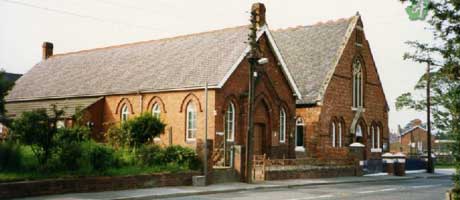Belton
The parish of Belton lies to the north east of Epworth. The large straggling village lies on both sides of the A161 for nearly a mile, with side roads leading to Beltoft, Sandtoft and through Cburchtown to Belshaw Lane. Belton comprises the hamlets of Westgate, Grey Green, Bracken (pronounced Braycon) Woodhouse and Churchtown. The name Belton is said to have connections with the worship of the sun god Bel, as in Beltane.
Doomsday gives the manor as belonging to Geoffrey de Wirce. It was enclosed as a park by the Mowbray family who had a lodge 'Belgrave' on it. In 1145 the manor along with that of Haxey, Owston and Epworth belonged to the Abbey of Newburgh and went to the Priory of Alta-Prisa in 1324 together with land at Beltoft. Henry VII sold it to the Corporation of Lincoln. The fine church of All Saints much written about by Stovin, contains the altar tomb of Richard of Belwood. Re-interred in it, in the sixteenth century, was Thomas Vavasor, famous for his cause against the participants of the Isle Drainage Scheme. Other families commemorated are the Rythers and the Popplewells. Mrs. Popplewell of Beltoft burnt Reading's property at Sandtoft and three years later led a mob who burnt down his house there.
Belton, like many other Isle villages, had many benefactors, among them Jane Beard and the Meggott, Glew, Caistor and Barnard families. The Barnards in 1680 gave 21 yards of blue kersey cloth to be distributed to the poor.
Belton Fair Day was held on September 25th and was famous as a flax fair.
Belton's present school dates from 1869 but there had been previous schools. In 1788 John Williamson, an agricultural labourer, was removed from his post as school teacher after only three months.
Belton has always been a strong centre for Non-conformists. The 1672 census gives Belton 57 registered Non-conformist residents, equal to Epworth and far more than Haxey. The first chapel licence was in 1705 and a Baptist Chapel was established in 1802. Read records Wesleyans, Primitive Methodists, Baptists and New Connection all having Chapels there in 1859.
There must be mention of Temple Belwood finally demolished to make way for the M180. Roger de Mowbray gave the 'cowpasture' at Belwode to the Preceptory of Knight Templars, as a base. Also Hirst Priory which was d'Albini's gift and, with Beltoft Change, belonged to the Stovin family of Crowle.
Beltoft is mentioned in 1300 as belonging to one Roger de Beltoft. The Sheffield family had a residence there and the well known family of the Collinsons included John, the J.P., and William, who was a Captain in the East India Company, lived there.
Old family names in Belton are Maw, Theaker, Vause, Watson and Leggott.
A modern tradition is the Barrow Race, established around 1950 after a wager that it was possible to push a wheelbarrow containing a man over a course of three miles in a specified time, and also to drink a pint of beer at the five inns passed on the route. In the early years the Bridge Inn, where the bet was made, became the recognised finishing post, and held a winner's celebration. The pub closed in 1967 and the race organisers had to select an alternative venue. Later, interest in the race declined but recent years have seen a marked revival.
There is a Brace Transcript of the Parish Registers 1599 - 1754. The Registers themselves, also at Lincoln Record Office, are from 1542 - 1855 and there is also a Bishop's Transcript there from 1599-1830.


